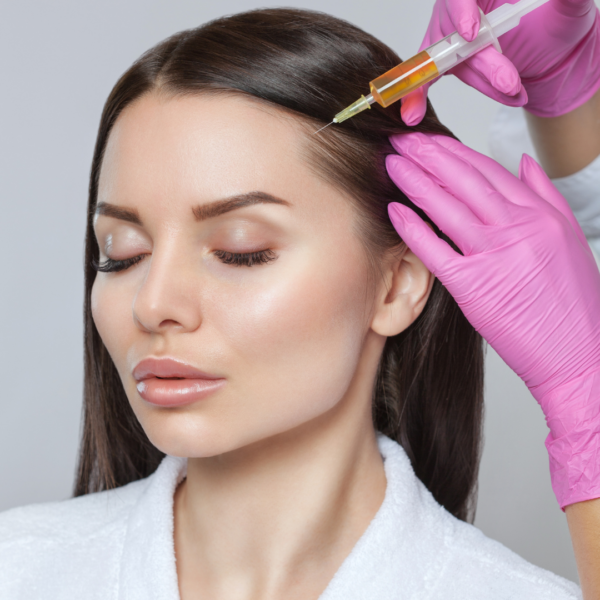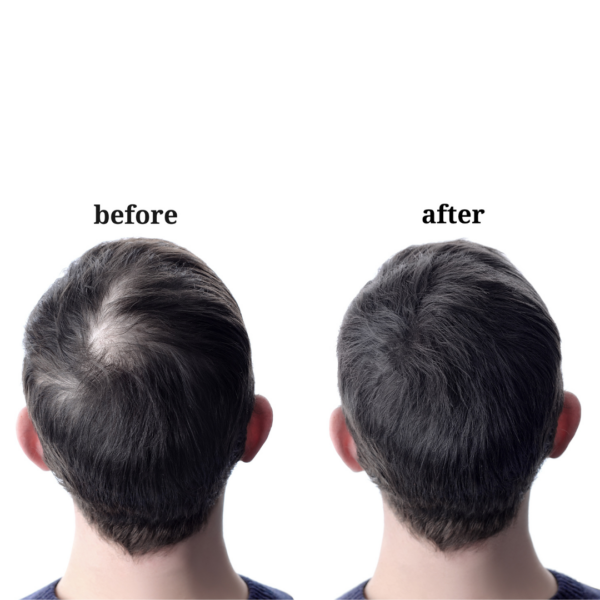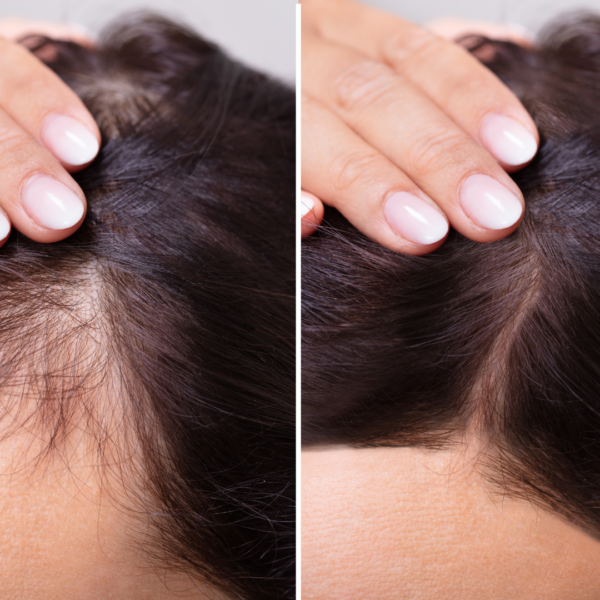
PRP Hair Growth Treatment
Platelet-Rich Plasma (PRP) therapy is a non-surgical, natural treatment designed to stimulate hair growth and improve the quality and thickness of existing hair. PRP is derived from your own blood, which is processed to concentrate platelets—cells rich in growth factors that promote healing and regeneration. When injected into the scalp, PRP stimulates hair follicles, encouraging new hair growth and improving overall hair density.
PRP therapy is a safe, effective, and natural solution for those seeking to enhance their hair growth, especially for those experiencing thinning hair or early-stage hair thinning.

How It Works

CANDIDATES FOR PRP HAIR GROWTH TREATMENT
- Are at least 18 years of age
- Are experiencing mild to moderate hair thinning or early hair loss
- Have thinning areas with active (but weakened) hair follicles
- Are in good physical and mental health
- Do not have medical conditions that impair healing or hair growth (e.g., certain autoimmune or blood disorders)
- Are not currently pregnant or breastfeeding
- Are not taking blood-thinning medications (such as warfarin, heparin, etc.)
- Are not taking antiplatelet medications such as aspirin, ibuprofen (Motrin, Advil), naproxen (Aleve), etc.
- Have realistic expectations about the outcome
- Are willing to commit to a series of treatments for optimal results
Quick answers to questions you may have
How many treatments are needed?
Most patients require 3 to 4 PRP treatments spaced about 4 to 6 weeks apart to achieve optimal results. After the initial treatment series, maintenance treatments every 6 to 12 months may be recommended to sustain hair growth.
When will I start seeing results?
While some patients may notice a slight improvement in hair texture and thickness after the first few treatments, visible results typically start to appear 3 to 6 months after the first session. Full results may take up to a year to develop, as PRP works gradually to stimulate hair follicles and promote growth.
Is PRP Hair Growth Treatment painful?
The procedure involves tiny injections, and while some discomfort may be felt, it’s generally well-tolerated. Topical numbing cream can be applied before the treatment to minimize any pain, making the procedure relatively comfortable for most patients.
Are there any side effects?
PRP is derived from your own blood, so the risk of allergic reactions or serious side effects is minimal. Some patients may experience mild redness, swelling, or tenderness at the injection sites, but these effects usually subside within a few hours to a day.
Can PRP be combined with other hair loss treatments?
Yes, PRP therapy can be used in combination with other hair growth treatments, such as topical medications like minoxidil or oral treatments. Your provider can recommend a comprehensive approach to achieve the best results based on your individual needs.
Is PRP hair restoration permanent?
PRP results are long-lasting, but not permanent. Over time, the natural aging process or continued hair loss may affect your results. Maintenance treatments every 6 to 12 months will help sustain the benefits and keep your hair looking full and healthy.
Who is a good candidate for PRP Hair Growth Treatment?
PRP is most effective for individuals with early-stage hair thinning or mild to moderate hair loss. It’s ideal for both men and women who are experiencing hereditary hair loss (androgenetic alopecia) or other forms of hair thinning. Your provider will evaluate your hair loss pattern to determine if PRP is right for you.
How long does the procedure take?
The PRP treatment itself typically takes 45 minutes to an hour. Most of the time is spent preparing and processing the blood sample, with the actual injection phase taking around 15-20 minutes.






